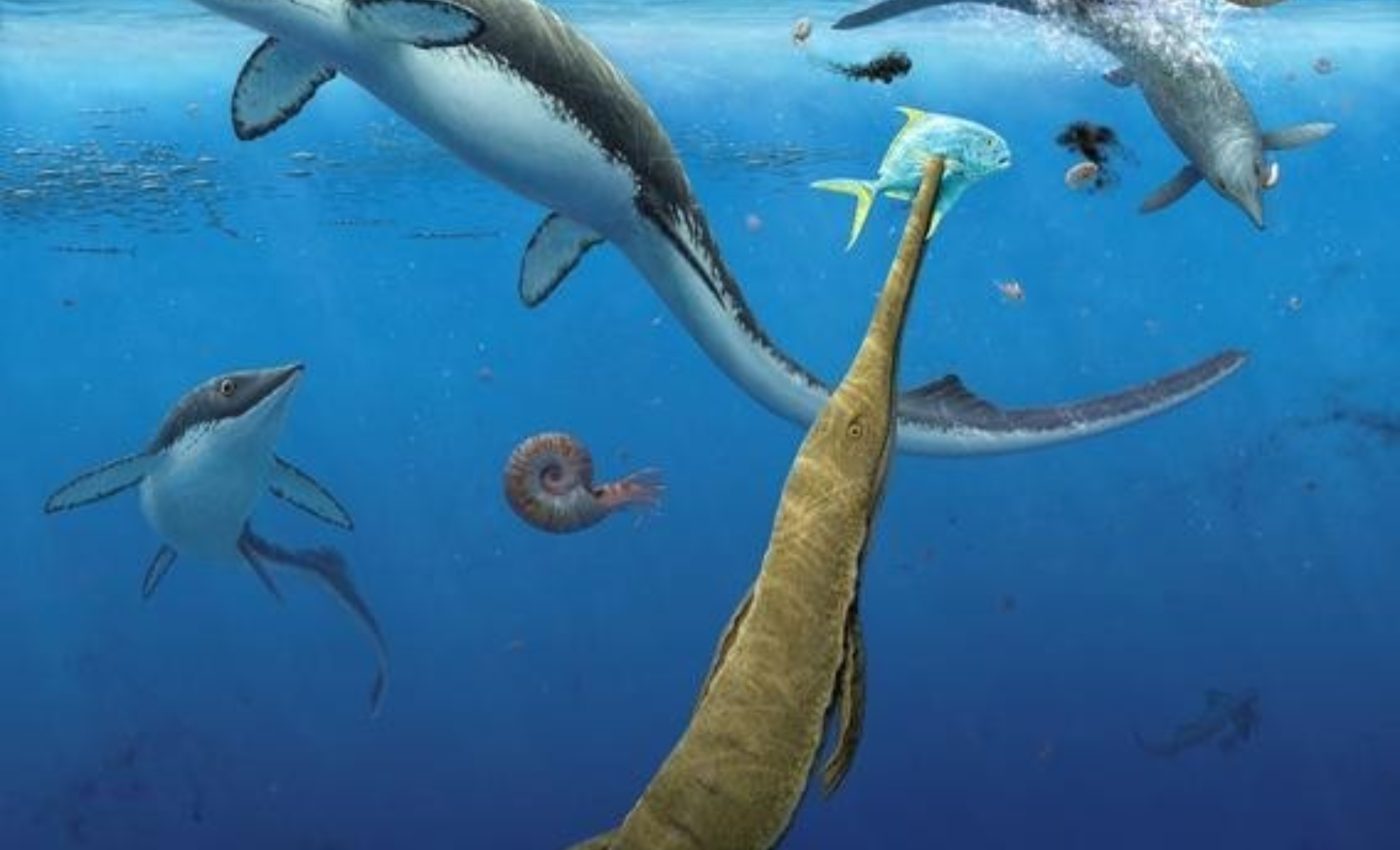
Ocean life rebounded quickly after Earth’s worst extinction event
In 2015, a team of scientists began digging through frozen cliffs in Spitsbergen. The location was remote, the work was exhausting, and the expectations were modest. Then, a pattern of bones started to appear – dense, layered, and strangely complete.
What looked like scattered fossils turned into one of the richest windows into life after Earth’s greatest disaster. Nearly a decade later, paleontologists from the University of Oslo and the Swedish Museum of Natural History finished the long task of studying the find.
Their results, published in the journal Science, show that ocean life returned far faster than anyone had imagined.
Earth’s biggest extinction
About 252 million years ago, the planet nearly died. Volcanic eruptions tore through the supercontinent Pangaea, turning air toxic and oceans acidic. Temperatures rose, oxygen dropped, and ecosystems collapsed.
The event wiped out more than 90 percent of marine species. Entire coral reefs disappeared. Textbooks long suggested recovery took millions of years.
Life, the story went, crawled back slowly – reptiles adapting bit by bit to the sea, amphibians creeping across shorelines. That story no longer fits.
The Arctic bone-bed
The fossils from Spitsbergen sit inside rock that once formed the floor of a prehistoric ocean. Even from a distance, the layer is visible – a streak of pale bone running through dark stone.
It formed roughly 249 million years ago, just three million years after the extinction. Excavations covered 36 square meters of mountain slope, divided into one-meter squares.
Researchers recorded every bone and tooth, hauling out more than 800 kilograms of fossils including shark teeth, fish scales and reptile skeletons.
Even coprolites – fossilized feces. The sheer density told its own story: this was no slow recovery zone, but a thriving sea.
Ocean life returns
The animals found in the bone-bed lived in a lively, competitive world. Small ichthyosaurs hunted squid, their bodies built for speed. Larger versions, some over five meters long, ruled as top predators.
Early archosauromorphs, ancient relatives of crocodiles, filled middle positions in the food chain. Amphibians joined the mix, splitting time between land and sea. This variety appeared astonishingly fast.
Three million years after the “Great Dying,” marine life had already rebuilt full ecosystems, complete with hunters, scavengers, and prey.
Ocean life evolved early
A global analysis compared the Spitsbergen fossils with similar sites worldwide. The results changed everything. The Arctic bone-bed ranked among the richest early Triassic marine communities ever found.
Evidence pointed to an even deeper surprise – marine reptiles and amphibians might have started adapting to the ocean before the mass extinction, not after it. That means evolution was already experimenting when the world began to collapse.
After the extinction cleared most competitors, those survivors expanded rapidly, filling every available niche.
A clear picture of recovery
Years of work went into the fossils after excavation ended. In Oslo and Stockholm, researchers cleaned and catalogued every specimen.
Tiny fragments were matched under microscopes; digital models reconstructed jaws, fins, and ribs. The team ran computer simulations to compare species structures and ecological roles.
What emerged was a clear picture of recovery: food chains rebuilt from the bottom up, predators adapted quickly, and new species filled old roles with different bodies. Evolution didn’t wait – it surged forward as soon as the environment allowed.
Life after collapse
The Spitsbergen fossils show more than ancient animals. They show how fast life reorganizes itself after collapse.
Mass extinctions erase, but they also clear space. Once conditions stabilize, survivors don’t tiptoe into the future – they rush in.
The ocean that formed after the end-Permian extinction looked different, but it worked. It had balance, energy flow, and complexity. Life hadn’t just survived; it had already reinvented itself.
Lessons for modern oceans
This discovery doesn’t belong only to the past. Modern oceans face rising temperatures, deoxygenation, and acidification again.
History suggests life will recover eventually, but not necessarily in a form humans recognize.
The species that dominate afterward may bear little resemblance to those that vanish. Scientists studying ancient recoveries hope to understand how ecosystems reorganize under stress – knowledge that might shape how humanity manages the crisis unfolding now.
Ocean life didn’t rebuild slowly
The fossils from Svalbard now sit in museum displays in Oslo and Stockholm. Visitors can trace the curve of an ichthyosaur jaw or spot tiny shark teeth embedded in stone.
Each fossil marks a moment when the world tried again after failure. The Arctic cliffs continue to shed fragments every summer, revealing new details about that early Triassic sea. The work isn’t finished.
The discovery in Spitsbergen rewrites a familiar story. Life doesn’t rebuild slowly by default. Sometimes, it races ahead as if impatient.
Three million years after the worst extinction in Earth’s history, the ocean was already alive again, filled with movement, competition, and invention. That speed – unexpected, unstoppable, and real – remains one of evolution’s boldest surprises.
The study is published in the journal Science.
Image Credit: Robert Back
—–
Like what you read? Subscribe to our newsletter for engaging articles, exclusive content, and the latest updates.
Check us out on EarthSnap, a free app brought to you by Eric Ralls and Earth.com.
—–













